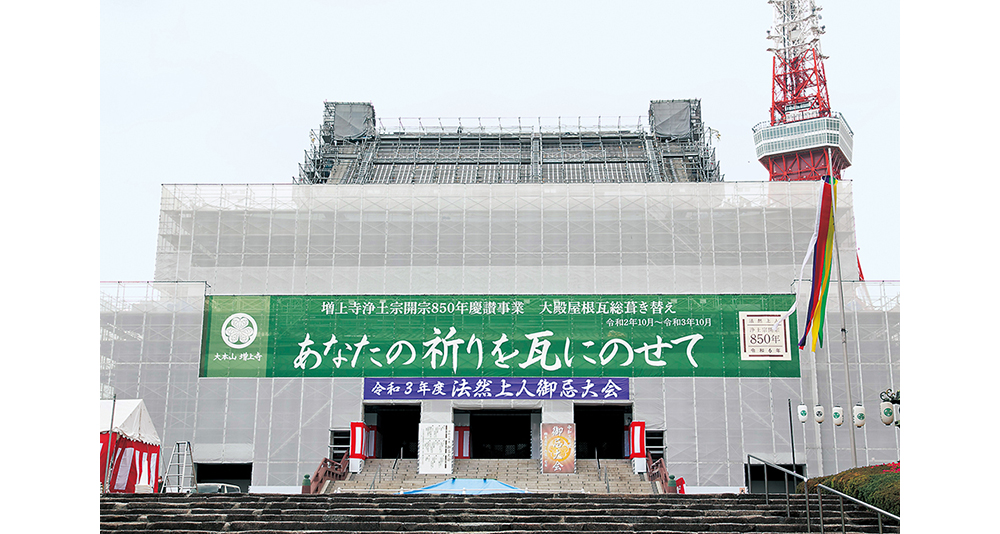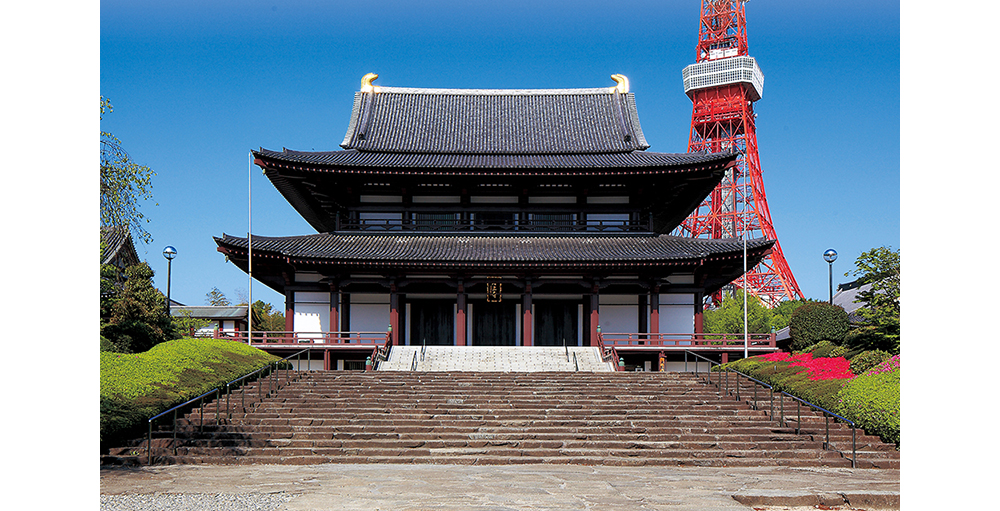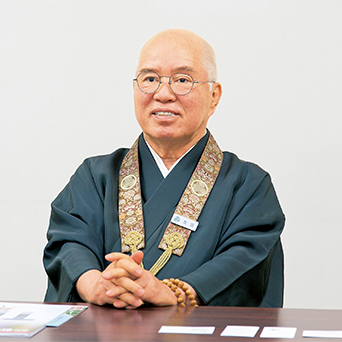
Replacing the roof tiles of the main building
Zojoji Temple is promoting a special project in celebration of the 850th anniversary of the Jodo Buddhism sect in 2024. As part of the renovation project, construction is underway to replace the current clay roofing, which was installed about 50 years ago, with titanium roofing.
— Since when has Zojoji Temple been known to the general public?
Tomoda:
After Tokugawa Ieyasu took office as the ruler of the Kanto Region, Zojoji Temple was selected as a family temple of the Tokugawa Family in 1590. After the Edo Shogunate was founded, Zojoji Temple gained prosperity under the protection of Ieyasu and became known to many people.
― Approximately how many people visit the temple today?
Tomoda:
Approximately one million people visited the temple each year before the COVID-19 pandemic. But not all the visitors listen to preaching of the Jodo sect or practice Nembutsu (invocation of the name of the Buddha Amida) in their everyday lives. Because this temple is located close to Tokyo Tower, it attracts many tourists. We hope that even those coming here as tourists will leave as worshippers, after putting their hands together and praying to Buddha.
― Why did you decide to entirely replace the roof tiles? Please tell us the overview of the construction.
Tomoda:
The current main building was built almost 50 years ago in 1974, after the old one burned down in the Great Tokyo Air Raid in 1945. The roof titles are severely damaged, having endured long years of exposure to wind and snow throughout the Showa and Heisei periods. Because many people, including our religious adherents, visit the main building, the consequence would be devastating should an inland earthquake occur. This is why we started considering reinforcing the seismic strength of the building frame and replacing the roof tiles. Because the Jodo Buddhism sect, which was founded by Priest Honen in 1175, is celebrating its 850th anniversary in 2024, we decided to entirely replace the roofing on the main building as part of a celebratory project.
For the new roofing material, we selected titanium for its lightness and durability. The tile thickness was reduced to 0.3 mm, achieving significant reduction in weight of the roofing. Moreover, its reinforced seismic strength will ensure the safety of the main building in case of disaster. The construction area of the main building roof is 4,235 square meters and approximately 60 thousand titanium tiles are used for the roofing. Based on these numbers, this is one of the world's largest-scale titanium roofing replacement projects. The renovation construction began in October, 2020, and will be completed at the end of October this year.


Titanium tile
Replacing the clay tiles with titanium ones reduces the weight of the roofing to about one tenth of its original weight and improves its seismic strength.
― Why did you choose titanium tiles instead of clay tiles?
Tomoda:
Our biggest concern was the risk of falling roof tiles. However, because the titanium tiles are only 0.3 mm thick, they won't pose a serious danger to people should they be blown away by wind. Replacing the roofing with titanium tiles will help reduce its total weight to about one tenth of the original clay roofing. Moreover, looking up at the roof, no one would even notice they are made of titanium.
Copper plate tiles with verdigris would have created a sophisticated atmosphere, but we chose the titanium tile because the main building was originally tile-roofed and the titanium tile was more suitable for recreating the shade and atmosphere of the clay tile roofing. The reduced weight of the roofing will help increase its seismic strength while its enhanced durability and sophisticated design allows the beauty of the tiles to last long, thus allowing us to pass down their refined design to the future generations.
― Was this project cost effective?
Tomoda:
For most repair works of cultural assets, etc., the entire building needs to be surrounded with a temporary steel roof and scaffolding, but this alone costs as much as one building. For this project, however, we could save the total cost by utilizing the state-of-the-art technologies of Shimizu Corporation and Gantan Beauty Industry, which saved the need to build such a temporary facility.
I sincerely appreciate that we could realize our ultimate objective of passing down our traditions to the future generations while saving the cost, by using the titanium material of Nippon Steel, the roofing of Gantan Beauty Industry, and the analysis technologies of Shimizu Corporation, all of which are today's most advanced technologies.
― You also utilized cloud funding using the Internet.
Tomoda:
We are going to attach donation sheets with benefactors' names and prayers on the backside of each roof tile, which will be dedicated to and remain as part of the main building for a long period of time. As per our mantra "offer your prayer on a tile," we sincerely hope that as many people as possible will become fans of Zojoji Temple so that we can continue building our history together.
― What are your aspirations for the future?
Tomoda:
It is our mission to pass down our traditions to the next generation. I hope that Zojoji Temple will continue to provide emotional support for many people regardless of their Buddhism sect.












